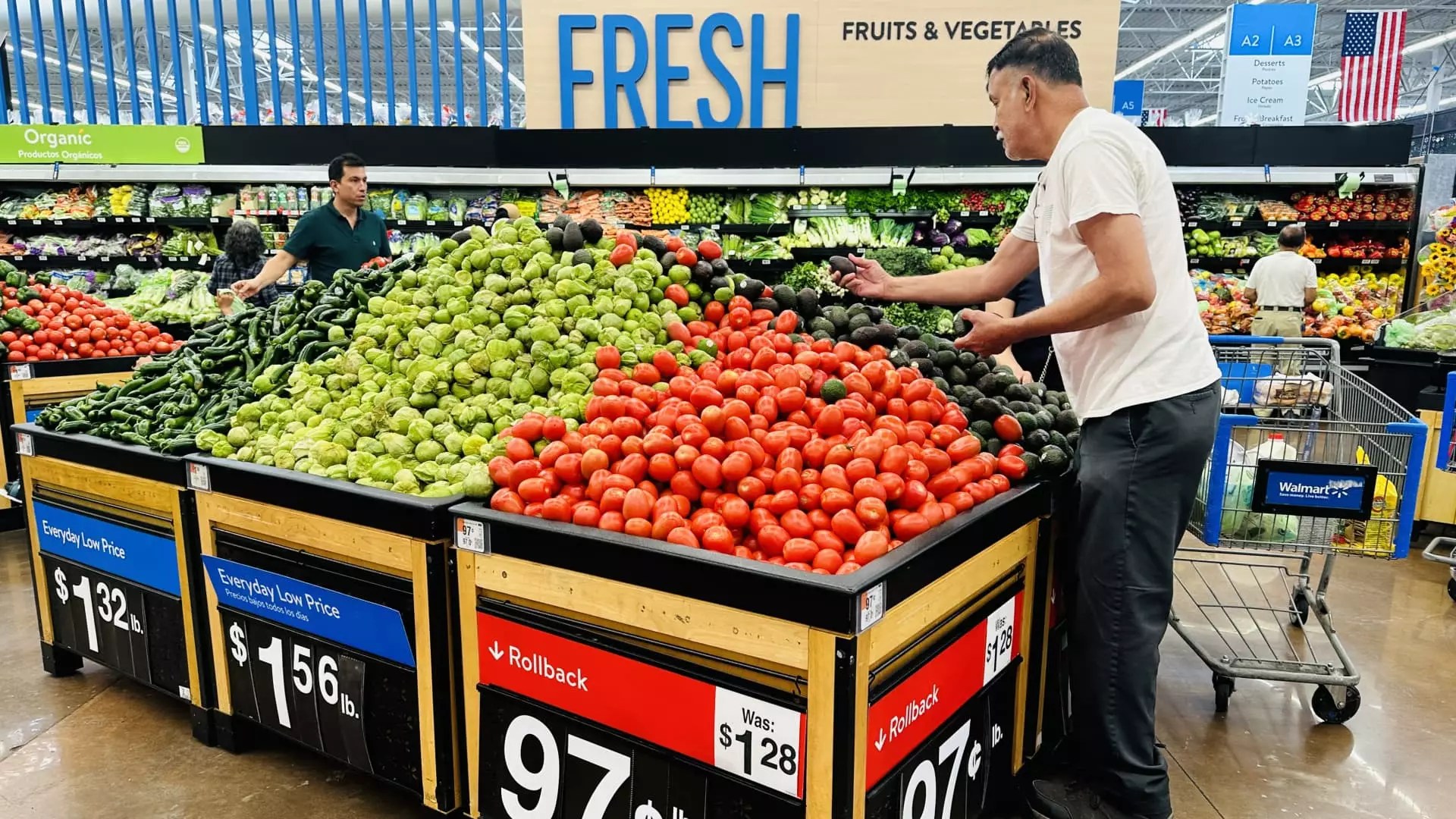In an era fraught with economic uncertainty, a staggering number of Americans are turning to buy now, pay later (BNPL) schemes to manage their finances. According to recent data from Lending Tree, about half of Americans have utilized such loans, with a remarkable 25% using BNPL specifically for purchasing groceries. This trend has undergone a significant surge, climbing from 14% in 2024 and 21% in 2023. It paints a picture of desperation: people are resorting to high-risk financial options just to keep their pantries stocked and their families fed.
The foreboding reality here is the increasing need among consumers to stretch their budgets, highlighting a deeper malaise in the economy. This predicament is hardly surprising, given the financial pressures exerted by persistent inflation and soaring interest rates. Additionally, the uncertainty surrounding tariffs has further shaken consumer confidence, leading them to seek out dubious financial mechanisms that may ultimately do them more harm than good.
The Catch-22 of Modern Financing
While BNPL loans may seem like a lifeline, especially with the allure of no immediate interest, they are fraught with risks that far too many consumers are overlooking. Late payments have surged, with 41% of BNPL users admitting to being late on their loans within the past year—a stark jump from 34% in the previous year. These delays may only last “a week or so,” as Lending Tree’s chief analyst, Matt Schulz, reports, but the implications of this financial juggling act can resonate far beyond just a bruised credit score.
Moreover, 60% of BNPL users confess to juggling multiple loans simultaneously. Almost a quarter hold three or more at the same time, putting themselves in a precarious situation. At face value, these loans offer a seemingly harmless way to manage finances, but the reality is that consumers are building precarious towers of debt that could come crashing down at any moment.
This method of financing could be likened to a double-edged sword. While it provides short-term relief, it also sets the stage for potential financial ruin. Schulz wisely cautions against mismanaging these financial options, advising consumers to tread lightly. The dangerous cycle of relying on BNPL could spiral into deeper debt, impacting consumer credit ratings and overall financial health, leaving individuals in a state of continuous struggle.
The Cool Factor Versus the Cost
Lately, BNP is not just about groceries; it has infiltrated the pockets of concertgoers at high-profile events like Coachella. Should it be acceptable to finance guitar riffs and festival experiences with debt? While financial prudence should always reign supreme, the prevalence of BNPL at such events suggests that consumer culture is shifting towards a dangerous normalization of financing luxuries and experiences. This reliance unveils a disquieting truth about modern consumerism: we’re now more willing to fund our whims with borrowed money, achieving an illusion of living well but laying the groundwork for financial distress.
Adding fuel to the fire is DoorDash’s recent announcement that it will accept BNPL financing from services like Klarna. This offering has been met with derision and skepticism, provoking a backlash as many ridicule the necessity of financing cheeseburgers and burritos. Is it truly an indictment of economic hardship that we’d need to borrow money to satiate our hunger? It seems we’re a mere step away from offering BNPL on life’s most basic needs, transforming everyday living into an exercise in debt management.
The Perils of Financial Complacency
As consumers flock to utilize these financing schemes as their go-to method for affording even the most basic of services, one must ask: what happens next? If these trends continue, America risks creating a generation marked not just by economic hardship, but by a comfort with debt that could lead to insurmountable challenges in the future.
It appears that the very essence of financial planning is deteriorating, with short-term gain overshadowing long-term stability. The American dream is slowly morphing into a financial nightmare, where living paycheck to paycheck melds seamlessly with an ever-increasing burden of debt. It is a troubling time for consumers, and while BNPL may provide a quick fix, it needs to be observed with a serious mindset, lest this can-do attitude lead to long-lasting anguish.


Leave a Reply